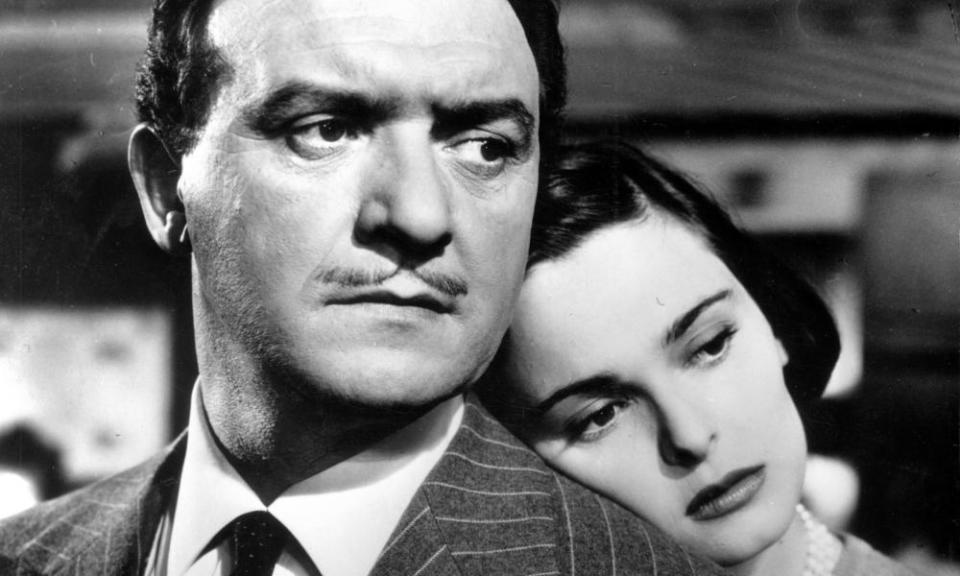Lucia Bosé obituary
The Italian actor Lucia Bosé, who has died aged 89, having contracted coronavirus, was much admired in two landmark films of the 1950s: Michelangelo Antonioni’s first feature, Cronaca di un Amore (Story of a Love Affair, 1950), and Juan Antonio Bardem’s Muerte de un Ciclista (Death of a Cyclist, 1955). The latter changed Bosé’s life, as she met the bullfighter Luis Miguel Dominguín when the film was shot in Spain. They married within two months and their relationship gained Bosé greater international attention than any of her films had. Although she gave up acting for several years, she still occasionally appeared in prestigious films, including Federico Fellini’s Satyricon (1969).
Lucia was born in Milan, to poor parents, Francesca Bosé and Domenico Borloni, and found employment as an errand girl in a lawyer’s office. Later, while working in a Milanese pastry shop, she was noticed by the director Luchino Visconti who promised to help her get into films. In 1947 she won the Miss Italy beauty contest, beating Gina Lollobrigida.
She moved to Rome, where Visconti introduced her to the film-maker Giuseppe De Santis, who tested her for the lead in his Riso Amaro (Bitter Rice, 1949), but the part went to Silvana Mangano. De Santis remembered Bosé and cast her in his next film, Non c’è Pace tra Gli Ulivi (Under the Olive Tree, 1950), which was not a success but launched her career nevertheless.

Through Visconti she met Antonioni, who chose her to play the sophisticated Milanese socialite in Story of a Love Affair, opposite Massimo Girotti, who had played in Visconti’s Ossessione (1943), a not dissimilar story about a married woman and an impoverished young man who plot to kill her husband. In Antonioni’s film, which is set in a very different milieu, the husband has hired a detective to investigate his wife’s past and the young man is revealed as the wife’s former lover. More in the noir genre than Visconti’s neorealist film, it was the first hint of Antonioni’s search for a style in which atmosphere and background count more than plot. For the final emotional scene, Antonioni was rough with the inexperienced Bosé in order to achieve the reaction he wanted. She said she was grateful, not resentful, for the director’s treatment.
After leading roles in two lightweight films by Luciano Emmer – Parigi è Sempre Parigi (Paris Is Always Paris, 1951) and Le Ragazze di Piazza di Spagna (Girls of the Spanish Steps, 1952) – she returned to work with De Santis for Roma Ore 11 (Rome Eleven O’Clock, 1952). She brought conviction to a basically novelettish role, in a fictionalised account of a tragedy in which a crowd of young women waiting for an interview for a single job vacancy were injured in the collapse of a staircase.
Antonioni chose Bosé again, in 1952, for one of his least admired films of those years, La Signora Senza Camelie (The Lady Without Camelias), as a beauty queen turned actor whose first film is a flop when it is premiered at the Venice festival – something that had really happened to Lollobrigida, who turned down the part. The film perhaps had too weak a script, but Bosé’s performance was one of its more compelling aspects.

She appeared in Luis Buñuel’s Cela S’Appelle l’Aurore (That Is the Dawn, 1956), made in France, but then, after meeting Dominguín, Bosé essentially gave up acting for a domestic life. In 1965, when I went for a Sunday brunch at the couple’s villa, the matador was away, but I heard Bosé confess that she hated the corrida and never went to the arena.
She made a guest appearance with her husband in Jean Cocteau’s Le Testament d’Orphée (1960), alongside Pablo Picasso, who was godfather to her daughter Paola. But Bosé was later to say she had felt embarrassed in the presence of another close friend of her husband’s, General Francisco Franco. After more than a decade she began to tire of being the wife of a torero who was also a notorious Don Juan and who was quoted as saying “I don’t believe in God because I am God myself.” They divorced in 1968.
Though she remained resident in Spain, Bosé occasionally appeared in prestigious films including Satyricon and, in 1987, Francesco Rosi’s elegant version of Gabriel García Márquez’s novel Chronicle of a Death Foretold. In 2007 she appeared in an adaptation of the 19th-century novel I Vicerè (The Viceroys), directed by Roberto Faenza.
With her three children grown up – the eldest, Miguel Bosé, having become a celebrated rock star and actor – she settled in the village of Brieva, Segovia, where she created the Museo de los Angeles, housing works of art about angels, including various pieces by Picasso which were auctioned at Christie’s in London in 2008.
She is survived by Miguel and her daughters, Paola and Lucia.
• Lucia Bosè, actor, born 28 January 1931; died 23 March 2020
• John Francis Lane died in 2018

 Yahoo Movies
Yahoo Movies 